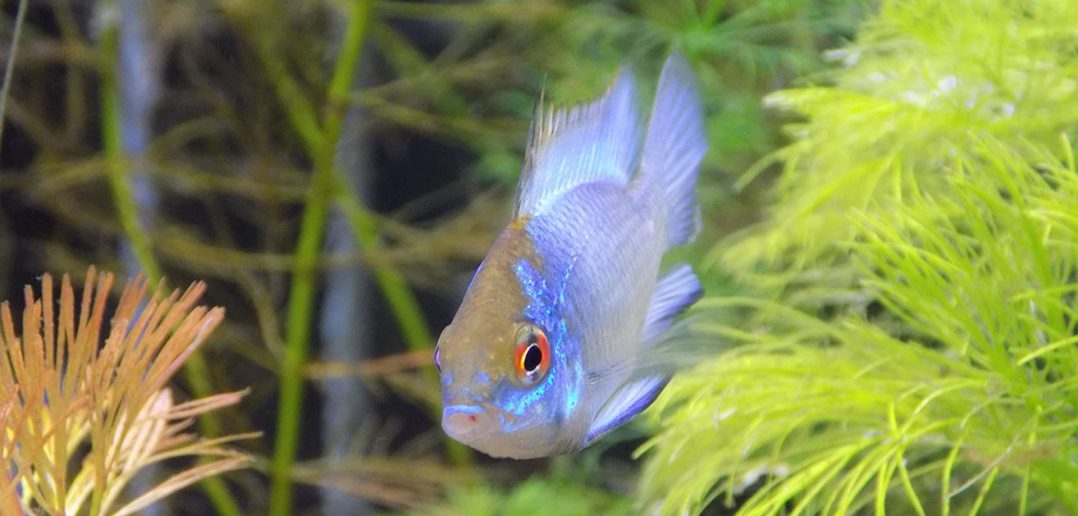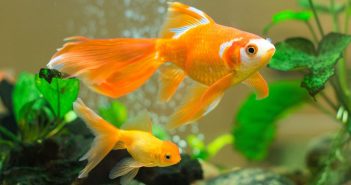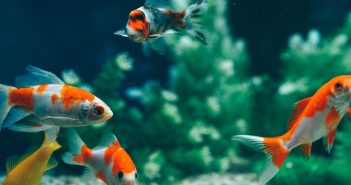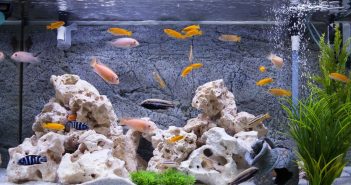All the real Apistogramma species are native to southern America. They share the same characteristics as their larger relatives, and will also display similar breeding habits. Dwarf cichlids from other groups are found in other parts of the world as well, such as the Pelvicachromis cichlids that originate from the African continent. The Pelvicachromis group includes several popular aquarium species of which the most well-known one is the Pelvicachromis pulcher. Pelvicachromis pulcher is frequently sold under the names Purple cichlid and Kribensis in fish stores.
Apistogramma dwarf cichlids are not the best choice for novice cichlid keepers, since the dwarf species are more sensitive and require more pampering than many larger cichlids. They are also harder to breed in captivity. You must provide your Apistogramma cichlids with soft and acidic water; the pH should stay between 5.5 and 6.0 at all times. Make sure the water quality is good, since poor water quality very quickly makes the Apistogramma cichlids prone to illness. It is hard to convince Apistogramma cichlids to eat dry food, and they should ideally not be kept on a dry food diet even if they accept it. Live or frozen food will keep them in much better shape. Brine shrimp, bloodworms, mosquito larvae or similar food is ideal.
You can keep Apistogramma cichlids in tropical community aquariums. It is important that the other inhabitants are large enough to stand up to the Apistogramma cichlids, since Apistogramma cichlids are known to defend their territory quite violently. Livebearers, Discus, Angelfish and Betta will usually get along well with Apistogramma cichlids as long as the aquarium is large enough. To avoid fights with other fish, you can also choose to keep your Apistogramma cichlids in their own aquarium. If you have a large aquarium you can combine at least two Apistogramma species with each other. During the spawning period your Apistogramma cichlids will display an extraordinary amount of aggressive behaviour. If you want to breed Apistogramma cichlids you should keep several fishes in a harem.
The Ram cichlid, Microgeophagus ramirezi, has a manner similar to the Apistogramma cichlids but is more resilient to poor water conditions. Microgeophagus ramirezi will appreciate roughly the same water chemistry as the Apistogramma cichlids. Unlike the Apistogramma cichlids, the Ram cichlids will do best when kept as couples, not harems. The first spawning is usually very difficult to induce, but once a breeding couple has got the hang of it they will keep on breeding continuously.
If you are a novice cichlid keeper, dwarf cichlids from the Pelvicachromis group is one of the best choice since Pelvicachromis cichlids are tougher and will survive worse water conditions than Apistogramma cichlids. They are also easier to feed, and frequently spawns in captivity.
If you want to breed dwarf cichlids, Pelvicachromis pulcher is a very suitable beginner choice since this species is one of the easiest dwarf cichlids to breed in aquariums. Some Pelvicachromis pulcher keepers place their fish in a pond during the summer and let them spawn outdoors, but Pelvicachromis pulcher will happily spawn in community aquariums and species tanks as well.
Keep in mind that Pelvicachromis cichlids might do some serious redecorating in the aquarium. They are prodigious diggers and love to produce huge craters in the substrate. Pelvicachromis cichlids are therefore not recommended for a planted aquarium, since they can uproot the plants or cause them to fall by undermining them.
For more great information on Cichlid Aquariums, visit AC Tropical Fish & Aquarium.





